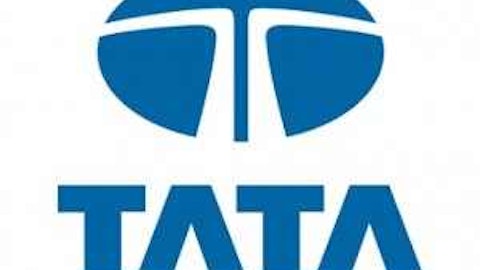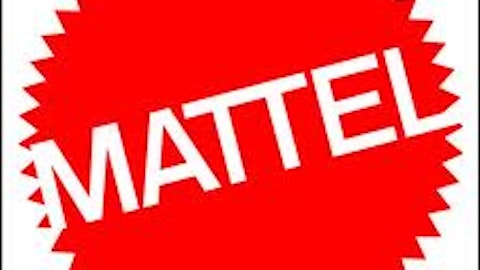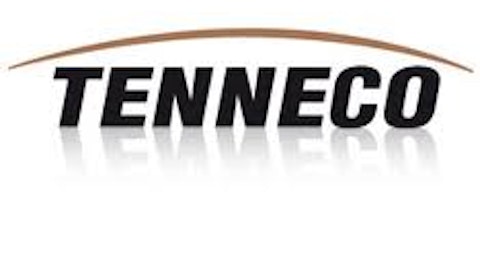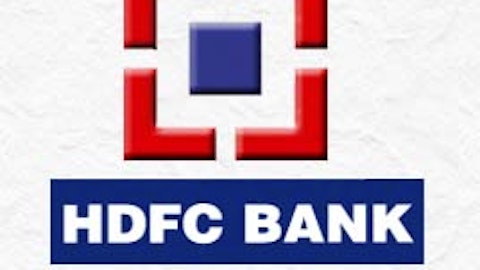Automaker with a P/E ratio below 10
Finding a company trading for less than half of its tangible book value is a rarity. Restricting yourself to such companies won’t produce a wide selection very often. A less stringent, but still useful, requirement that can identify a cheap company is a P/E ratio of below 10.
When calculating P/E ratios, I prefer using the average earnings of the past three years as opposed to the traditional TTM. Using 3-year averages, Tata Motors Limited (ADR) (NYSE:TTM)’s P/E ratio comes out to 8.14.
Here are a couple of reasons to be wary of this stock. The company’s market share in the Indian automotive market declined to 8.9% in 2013 from 13.0% in 2012. Sales of the Tata Nano, touted as the world’s least expensive car (Now about $2,600) declined by 38%. Debt is not a major problem, but it is not insignificant either. Tata Motors Limited (ADR) (NYSE:TTM)’s total debt to equity ratio of 1.54 is higher than the 0.96 ratio of General Motors, but still well below Ford’s ratio of 5.62.
One bright spot in the company’s latest 20-F was the performance of its light commercial vehicle segment. The segment, which includes sales of pickup trucks, increased sales by 21.5% in 2013. The company’s market share in the Indian light and commercial vehicle segment has exceeded 60% in each of the past three years.
Revenue has grown at a 3-year CAGR of 15.4%. During the same period, OCF grew at a 16.3% CAGR. That’s impressive growth. What’s more, the company’s TTM net profit margin of 7% is higher than the ratios of 3.6% and 4.3% for GM and Ford respectively. You can’t give too much weight to one year’s margins, but performance was impressive nonetheless.
Shares of this bank have gotten crushed
Shares of HDFC Bank Limited (ADR) (NYSE:HDB), India’s second largest lender by assets, are down 22.64% from where they stood on May 8. Is now a good time to scoop up the $26.6 billion bank?
The bank’s non-performing loans in the first quarter grew to 0.82% of total assets, an increase of 11 basis points year over year. Investors won’t be pleased about that, but they ought to be happy about first quarter profits of $376.7 billion, a 25.3% year over year increase.
Two key metrics for evaluating banks are return on equity (ROE) and return on assets (ROA). In the TTM period HDFC Bank Limited (ADR) (NYSE:HDB) had an ROE of 20.53% and its ROA was 1.84%. The corresponding figures for Wells Fargo were 13.51% and 1.52% and for Bank of America 2.81% and .31%. In terms of these two key metrics HDFC Bank Limited (ADR) (NYSE:HDB)outperformed two of America’s biggest banks over the past 12 months.
According to Yahoo! Finance, one analyst has promulgated a price target on the stock. The analyst has labeled the stock a strong buy in each of the past three months, and has a target of $48, 43.5% above where shares currently trade.
Foolish final thoughts
The American stock market is heating up. Bargain opportunities may be shrinking here in the states, they still exist in abundance internationally. The DJIA is up 19.3% year to date. At the same time the S&P BSE Sensex, (which includes all three of these stocks as components) India’s version of the DJIA, is down 0.6% year-to-date.
In my opinion the best pick of the three is Sterlite Industries India Limited (ADR) (NYSE:SLT). The company sells for less than half of its tangible value, and has been solidly profitable in each of the past four years. A diversified list of companies like that will almost always outperform the major averages. Still, I don’t think any one of these companies makes for a bad long term investment at current prices.
The article These Indian Stocks Look Cheap originally appeared on Fool.com and is written by Ryan Palmer.
Fool blogger Ryan Palmer has no position in any of the companies mentioned in this article. The Motley Fool has no position in any of the stocks mentioned in this article. Ryan is a member of The Motley Fool Blog Network — entries represent the personal opinion of the blogger and are not formally edited.
Copyright © 1995 – 2013 The Motley Fool, LLC. All rights reserved. The Motley Fool has a disclosure policy.




